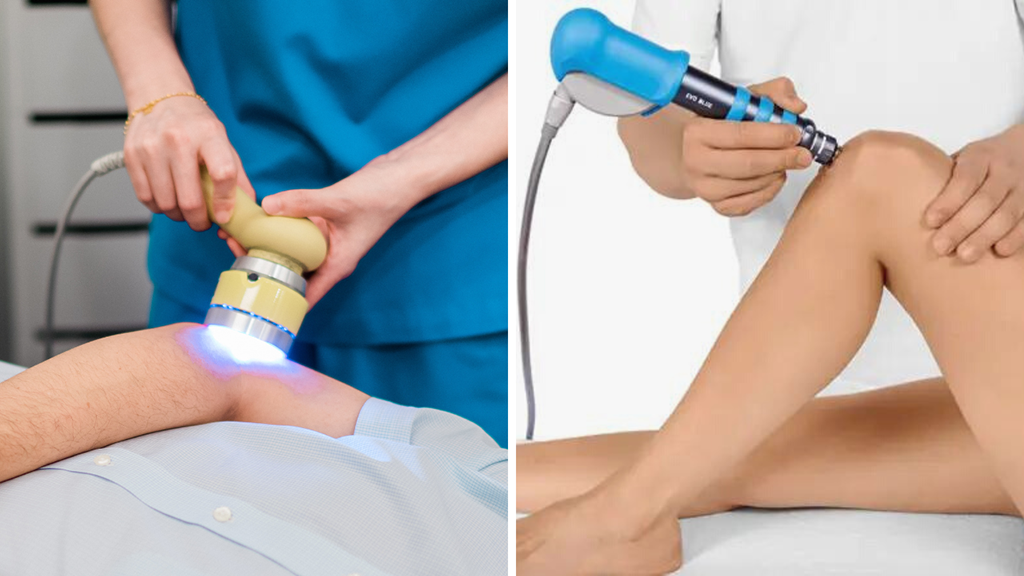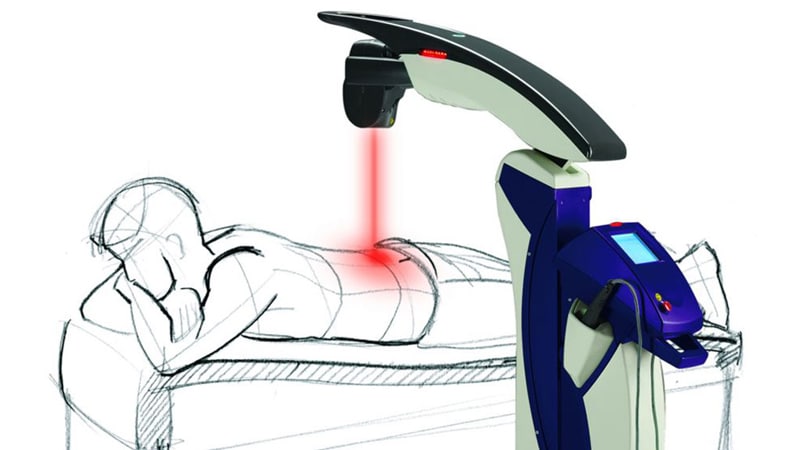The Role of Clinical Laser Therapy in Wound Healing and Cells Regeneration
Did you recognize that medical laser therapy has the possible to revolutionize wound recovery and cells regeneration? Whether you're dealing with persistent injuries, medical incisions, or cells damages, laser therapy may supply the mild yet powerful intervention you require. In this overview, we will discover the duty of medical laser treatment in wound healing and tissue regrowth, reviewing its advantages, techniques, devices, as well as its considerations and limitations.
Comprehending Clinical Laser Treatment
If you regularly experience wounds or tissue damages, it is essential for you to comprehend exactly how clinical laser therapy can assist in speeding up the recovery procedure (medical laser therapy). Clinical laser treatment is a non-invasive therapy that makes use of concentrated light to boost mobile task and advertise cells repair service. The laser emits a particular wavelength of light that is absorbed by the cells in the targeted area, triggering a series of organic feedbacks that facilitate recovery
One of the major advantages of clinical laser therapy is its ability to decrease inflammation. By targeting the damaged location with the laser, it can aid to lower swelling and discomfort, permitting for faster recuperation. The laser additionally promotes the production of collagen, an essential element in wound healing, which aids to strengthen and restore broken cells.
Medical laser treatment can be used to deal with a selection of problems, including injuries, burns, muscular tissue stress, and joint pain. It is a efficient and safe therapy choice, with very little adverse effects. medical laser therapy. Lots of clients report feeling a cozy, relaxing experience during the treatment, and experience prompt pain alleviation
Benefits of Laser Treatment for Wound Recovery
Utilizing medical laser treatment for wound recovery offers numerous benefits that can quicken the healing process. Among the primary benefits is that laser therapy aids to minimize discomfort and inflammation linked with wounds. The laser power stimulates the launch of endorphins, which are all-natural pain relievers, giving instant alleviation. Furthermore, the laser additionally helps to reduce swelling and redness, promoting faster recovery.
One more benefit of laser therapy is its capability to boost blood flow to the wounded area. The laser light raises the development of new members vessels, boosting oxygen and nutrient supply to the damaged cells. This accelerated blood circulation helps with the removal of waste items and toxins, even more sustaining the healing process.
Laser treatment additionally aids in the development of collagen, a vital component of injury healing. The laser promotes fibroblast task, which are cells responsible for collagen manufacturing - laser therapy light. Collagen aids to enhance the injury and promote the growth of new tissue, bring about faster injury closure
Furthermore, laser therapy has been shown to have antimicrobial impacts, helping to avoid infections in wounds. The laser energy kills microorganisms and various other microbes, reducing the threat of issues and ensuring a clean setting for healing.
Laser Treatment for Cells Regeneration
To promote cells regrowth, clinical laser therapy can be utilized in combination with various other treatment methods. Laser therapy has actually been shown to stimulate the production of development elements and improve the healing process. It functions by providing focused light energy to the targeted location, which can permeate deep into the tissues and boost mobile task.

In addition, laser treatment can read this article likewise advertise collagen synthesis, an essential component of cells regeneration. Collagen provides architectural assistance and assists in the formation of new tissue. Laser therapy boosts fibroblasts, the cells responsible for collagen production, leading to increased collagen synthesis and boosted tissue regeneration.

Methods and Tools in Laser Therapy
When using medical laser therapy for wound healing and cells regeneration, it is important to recognize the strategies and equipment entailed. One commonly made use of method is known as low-level laser treatment (LLLT) or chilly laser treatment. One more technique is high-intensity laser treatment (HILT), which makes use of higher power lasers to deliver restorative impacts deeper into the cells.
In regards to equipment, laser treatment devices can be found in different kinds. Handheld tools are typically made use of in centers and medical facilities for targeted therapies. These gadgets are mobile, simple to make use of, and enable for specific application of laser therapy. For bigger treatment locations or multiple people, bigger systems understood as tabletop gadgets are utilized. These devices offer even more power and adaptability, enabling a broader variety of treatments. Some laser treatment equipment likewise includes sophisticated features such as flexible power settings, different wavelengths, and integrated precaution.
Comprehending the methods and tools made use of in clinical laser treatment is crucial for healthcare professionals to offer efficient and safe treatments. By keeping up to date with the most recent developments in laser therapy techniques and tools, doctor can remain to boost injury healing and tissue hop over to these guys regrowth end results for their individuals.
Limitations and Considerations in Laser Therapy
One important factor to consider in laser treatment is the prospective restrictions that healthcare professionals need to recognize. While laser therapy has shown encouraging cause injury recovery and cells regrowth, it is not without its restraints. One limitation is the depth of penetration. Various laser wavelengths have differing degrees of penetration, and this can affect the performance of the treatment. Lasers with shorter wavelengths might have restricted penetration and might not be appropriate for dealing with much deeper wounds or cells.
An additional restriction is the potential for damaging effects. Laser treatment, when not utilized appropriately, can cause burns, pain, and cells damages. It is vital for healthcare experts to have the needed training and know-how to ensure effective and safe therapy. In addition, certain client features, such as skin type, sensitivity, and underlying clinical problems, require to be thought about to reduce the danger of damaging results.
Cost is another consideration in laser therapy. The equipment required for laser therapy can be costly, and the price might restrict its ease of access in certain healthcare settings. Furthermore, the maintenance and operational prices of the tools need to be taken into account when thinking about the usefulness of applying laser therapy.
Conclusion
In conclusion, medical laser therapy plays a significant duty in wound healing and tissue regeneration. With its countless benefits, such as sped up recovery, lowered pain, and minimal scarring, laser treatment has shown to be a valuable therapy choice. The use of innovative methods and equipment more improves its effectiveness. It is crucial to think about the limitations and possible dangers associated with laser treatment to make certain risk-free and optimal outcomes.
In this guide, we will certainly discover the role of clinical laser treatment in wound recovery and tissue regrowth, discussing its advantages, techniques, tools, as well as its restrictions and factors to consider.When using clinical laser therapy for injury healing and cells regeneration, it is essential to comprehend the strategies and tools involved. One frequently made use of strategy is known as low-level laser therapy (LLLT) or chilly laser treatment. An additional strategy is high-intensity laser therapy (HILT), which uses higher power lasers to provide restorative results deeper into the tissues.In final thought, medical laser therapy plays a considerable function in injury recovery and cells regrowth.